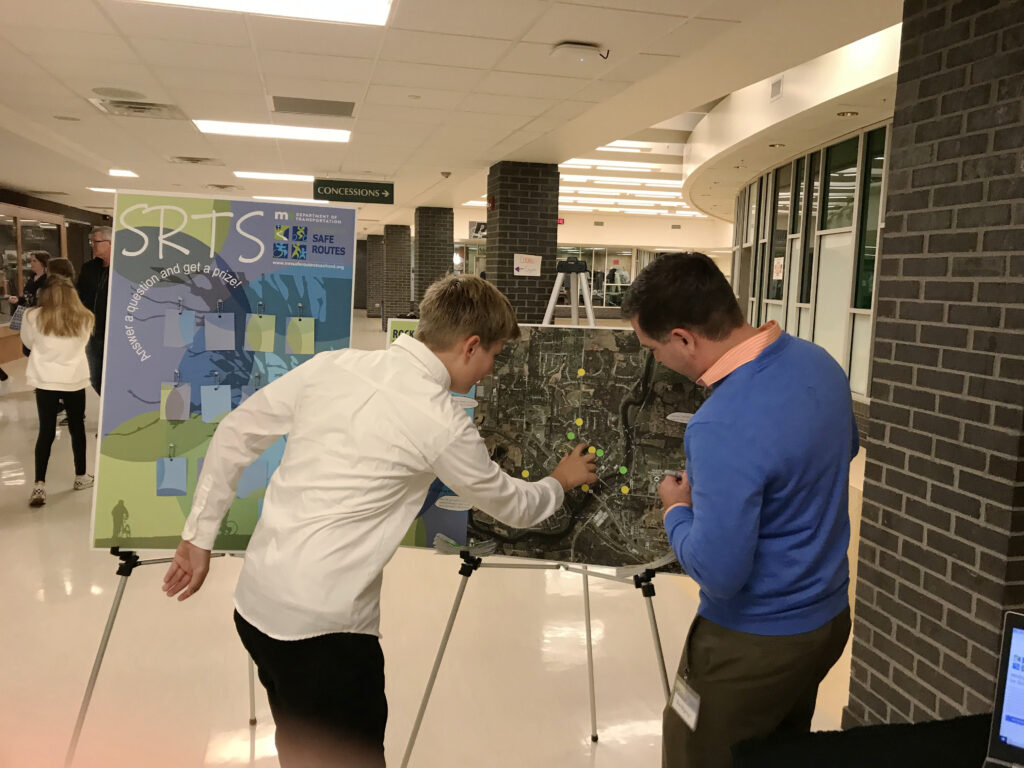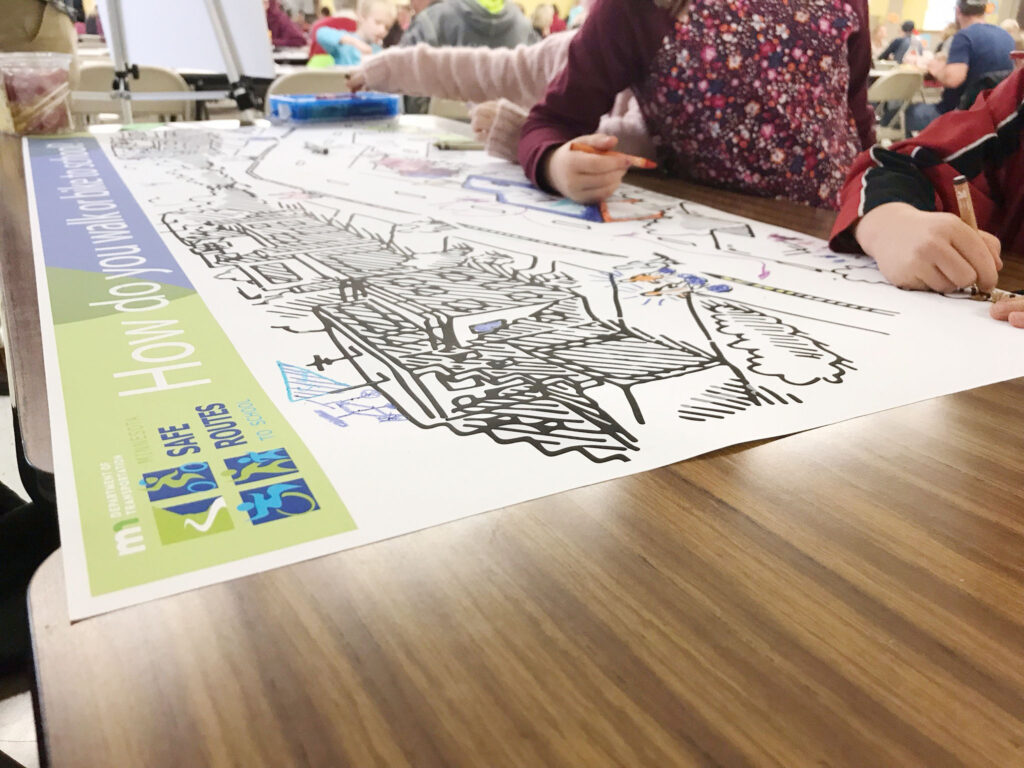Evaluation
By helping to identify specific issues and monitor trends over time, evaluation strategies ensure that Safe Routes to School initiatives are effective. Evaluation may include student or parent surveys to track rates of walking and biking, or might include a look at traffic crash data near schools. Data collection should occur at the beginning of a Safe Routes to School program, and then at periodic intervals over time.

Numbers and words
Once a Safe Routes to School program has begun, it is vital to examine the same factors periodically. This helps demonstrate the impact of a Safe Routes to School program in general, or particular strategies.
There are generally two kinds of information involved in Safe Routes to School evaluation:
- Numbers or quantitative data. For example, tallies of how students arrive at school.
- Words or qualitative data. For example, what a principal says about traffic safety around the school during an interview.

Evaluation Resources
MnSRTS Evaluation Tools and User Guide:
- User Guide for all Evaluation Tools
- Parent Surveys (English/Spanish/Somali) and Student Tallies:
Essential tools for understanding parent concerns and barriers to address in your program while measuring baseline mode counts (walk/bike/bus/automobile) based on grade. Current Planning Assistance Communities can find their survey here. - School Zone Hazard Observational Assessment:
Identifies critical issues that decrease safety in the immediate area around the school (i.e. distractions, illegal parking/pick up, unsafe crossing or helmet usage). Use the School Zone Hazard Analysis Guide Worksheet to quickly analyze your observation tallies. - School Environment and Policy Assessment:
Used to identify what aspects of environment and policy in the school zone create a safe and appealing walking and biking environment, and what aspects need improvement. - SRTS Plan Implementation Survey:
A survey to gather information on SRTS plans that are in development or implementation phases to better understand the impact of plan strategies on building a successful SRTS program. - School Implementation Progress Checklist:
Measures the progress of implementation of Safe Routes to School activities at a specific school with or without a SRTS plan.
- Evaluation tip sheet
- National Center for Safe Routes to School – Evaluation
- Walk Audit tip sheets